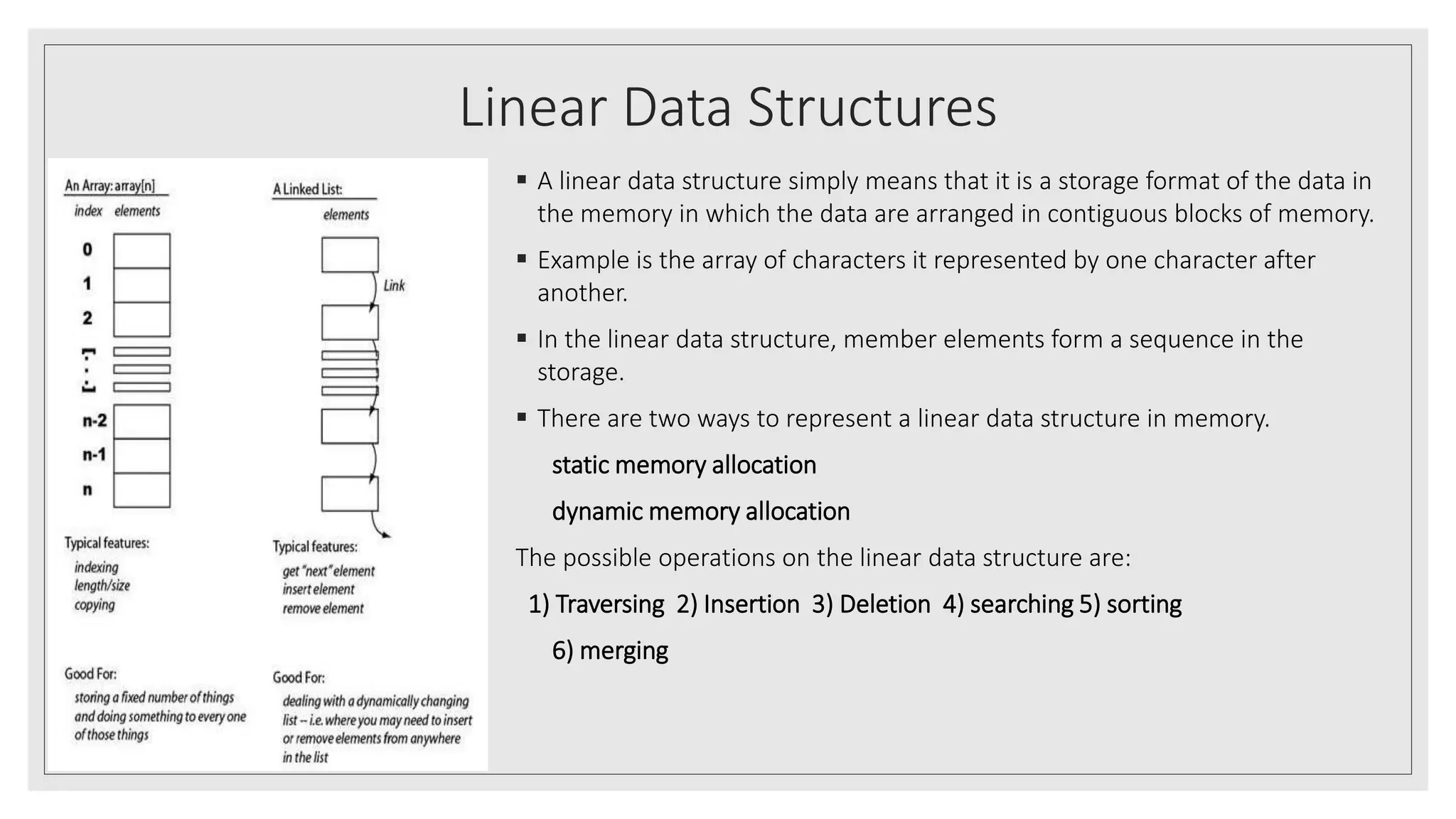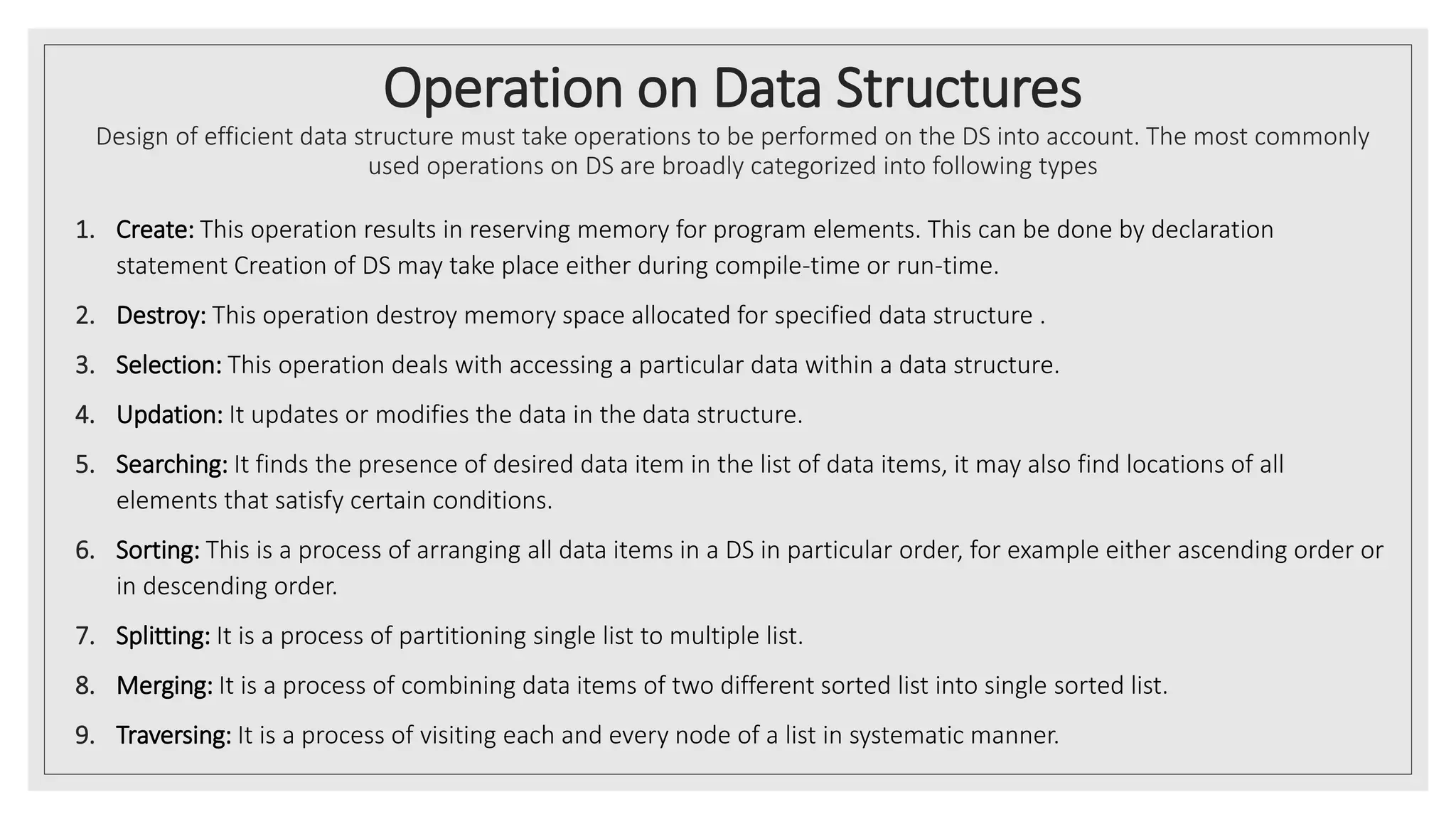The document discusses data structures and provides details about various types of data structures:
1) It describes linear and non-linear data structures, and lists arrays, stacks, queues, trees and graphs as examples.
2) It explains that primitive data structures like integers and characters are basic types directly used by machines, while non-primitive structures like arrays and lists are more sophisticated structures derived from primitive ones.
3) It provides details about common operations on data structures like creation, destruction, selection, updating, searching, sorting, splitting and merging.


















![How to access
a specific
array value?
You can access any array
item by using its index
Syntax
arrayName[indexNum]
Example
balance[1]
Here, we have accessed the second value of the array using its
index, which is 1. The output of this will be 200, which is basically
the second value of the balance array.](https://image.slidesharecdn.com/datastructureppt-220819133107-d5d1060c/75/DataStructurePpt-pptx-19-2048.jpg)

